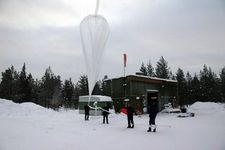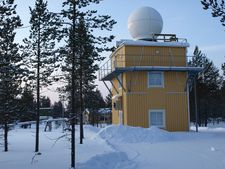Lapland Atmosphere-Biosphere Facility 2 Radiosonde Intercomparison
LAPBIAT-2 (2010)
During the radiosonde intercomparison campaign in the arctic winter atmosphere at Sodankylä, the observations focused on water vapor in the upper troposphere and stratosphere and to a smaller extent on temperature. Stratospheric water vapor was measured using the Cryogenic Frostpoint Hygrometer (CFH), the Fluorescent Advanced Stratospheric Hygrometer for Balloon (FLASH-B), the Vaisala RR01 Reference Radiosonde and the Middle Atmospheric Water Vapor Radiometer (MIAWARA). These observations were supported by the Compact Optical Backscatter AerosoL Detector (COBALD) and the University of Wyoming Backscatter Sondes (BKS) as well as EnSci 2Z ozone sondes. In addition, tropospheric water vapor was measured using the commercial radiosondes from Intermet (USA), Graw (Germany) and Vaisala (Finland).
The campaign was conducted in two phases. The first phase took place between 15th January and 8th February 2010, the second phase took place between 8th March and 18th March 2010. During the first phase, northern Scandinavia was almost continuously under the polar stratospheric vortex characterized by extremely cold stratospheric temperatures. After the dissipation of the polar stratospheric vortex in early February, stratospheric temperatures during second phase of the campaign were nearly 50°C warmer compared to the first phase. This allowed a rigorous test of the sensors under very different atmospheric conditions.
Due to the unusually cold conditions during the first phase, stratospheric dehydration was observed extensively over Sodankylä. In contrast to previous episodic events, dehydration during this January was repeatedly observed both in its active and passive phase. The mix of instruments led to an excellent quantification of the dehydration and its duration, which to this extent has not been observed in the Arctic before.

